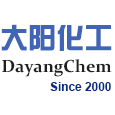Products Categories
| CAS No.: | 17557-23-2 |
|---|---|
| Name: | Neopentyl glycol diglycidyl ether |
| Molecular Structure: | |
|
|
|
| Formula: | C11H20O4 |
| Molecular Weight: | 216.277 |
| Synonyms: | Propane,1,3-bis(2,3-epoxypropoxy)-2,2-dimethyl- (8CI);1,3-Bis(2,3-epoxypropoxy)-2,2-dimethylpropane;1,3-Bis(glycidyloxy)-2,2-dimethylpropane;2,2-Bis(glycidyloxymethyl)propane;2,2'-[(2,2-Dimethyl-1,3-propanediyl)bis(oxymethylene)]bis[oxirane];Oxirane,2,2'-[(2,2-dimethyl-1,3-propanediyl)bis(oxymethylene)]bis-; |
| EINECS: | 241-536-7 |
| Density: | 1.095 g/cm3 |
| Melting Point: | 76oC |
| Boiling Point: | 300.7 °C at 760 mmHg |
| Flash Point: | 113.9 °C |
| Solubility: | 0.5-1.0 g/100 mL at 20.5 °C in water |
| Appearance: | colourless liquid |
| Hazard Symbols: |
 Xi Xi
|
| Risk Codes: | 38-43 |
| Safety: | 24-37 |
| PSA: | 43.52000 |
| LogP: | 0.84340 |
- 483366-12-7(2S,4R)-1-Boc-2-cyano-4-hydroxypyrrolidine
- 361456-36-2METHYL (R)-(+)-ISOCYANATO-3-PHENYLPROPI&
- 5156-58-1N-(1-Benzyl-4-pipperidinyl)-N-phenylpropanamide HCl
- 81281-59-67-Benzylideneaminotheophylline
- 50288-62-5threo-Phenyl-2-piperidyl acetamide
- 82993-81-5D-threo-Ritalinic acid hydrochloride
- 47087-37-6Z-D-Glu-OMe
- 73441-42-6METHYL-5-CHLORO-2,2-DIMETHYLVALERATE
- 211914-50-0N-[[2-[[[4-(Aminoiminomethyl)phenyl]amino]methyl]-1-methyl-1H-benzimidazol-5-yl]carbonyl]-N-(2-pyridinyl)-beta-alanine ethyl ester hydrochloride
- 240444-70-62,3,5,6-Tetrafluor-4-(methoxymethyl)benzyl-2,2-dimethyl-3-(prop-1-en-1-yl)cyclopropancarboxylat
- 175-57-52-Oxaspiro[3,4]octane
- 175837-01-11-Acetyl-5-(2-aminopropyl)-2,3-dihydro-1H-indole-7-carbonitrile
- 175865-59-5Valganciclovir hydrochloride
- 175893-71-7VP/DMAPA ACRYLATES COPOLYMER
- 17598-65-1Deslanoside
- 17599-81-4COPPER(I)SULPHATE
- 1760-24-3N-[3-(Trimethoxysilyl)propyl]ethylenediamine
- 17603-20-2Propylium, 1-ethyl-1,2-dimethyl-
- 104987-11-3Tacrolimus
- 141-53-7Sodium formate
- 8001-54-5Quaternary ammonium compounds, alkylbenzyldimethyl, chlorides
- 9003-39-8Povidone
- 10161-34-9Trenbolone acetate
- 402957-28-2Telaprevir
- 68-19-9Cyanocobalamin

What can I do for you?
Get Best Price
Consensus Reports
Specification
The Neopentyl glycol diglycidyl ether, with the CAS registry number 17557-23-2, is also known as 1,3-Bis(2,3-epoxypropoxy)-2,2-dimethylpropane. It belongs to the product categories of Oxiranes; Simple 3-Membered Ring Compounds; Epoxide Monomers; Monomers; Polymer Science. Its EINECS number is 241-536-7. This chemical's molecular formula is C11H20O4 and molecular weight is 216.27. What's more, its systematic name is 2,2'-[(2,2-Dimethyl-1,3-propanediyl)bis(oxymethylene)]dioxirane. Its classification codes are: (1) Mutation data; (2) TSCA Flag T [Subject to the Section 4 test rule under TSCA]; (3) Tumor data. This chemical is used as epoxy resin active diluents and chlorinated paraffin wax stabilizer.
Physical properties of Neopentyl glycol diglycidyl ether are: (1)ACD/LogP: 0.646; (2)# of Rule of 5 Violations: 0; (3)ACD/LogD (pH 5.5): 0.65; (4)ACD/LogD (pH 7.4): 0.65; (5)ACD/BCF (pH 5.5): 1.83; (6)ACD/BCF (pH 7.4): 1.83; (7)ACD/KOC (pH 5.5): 53.53; (8)ACD/KOC (pH 7.4): 53.53; (9)#H bond acceptors: 4; (10)#H bond donors: 0; (11)#Freely Rotating Bonds: 8; (12)Polar Surface Area: 43.52 Å2; (13)Index of Refraction: 1.475; (14)Molar Refractivity: 55.617 cm3; (15)Molar Volume: 197.467 cm3; (16)Polarizability: 22.048×10-24cm3; (17)Surface Tension: 40.86 dyne/cm; (18)Density: 1.095 g/cm3; (19)Flash Point: 113.853 °C; (20)Enthalpy of Vaporization: 51.92 kJ/mol; (21)Boiling Point: 300.735 °C at 760 mmHg; (22)Vapour Pressure: 0.002 mmHg at 25°C.
Uses of Neopentyl glycol diglycidyl ether: it can be used to produce 7,7,15,15-tetramethyl-1,5,9,13tetraoxa-cyclohexadecane-3,11-diol by heating. It will need reagent NaH and solvent tetrahydrofuran. It's a reaction of cycloaddition. The yield is about 75%.

When you are using this chemical, please be cautious about it as the following:
This chemical is irritating to skin and may cause sensitisation by skin contact, so you should avoid contact with skin. When using it, you need wear suitable gloves.
You can still convert the following datas into molecular structure:
(1)SMILES: O(CC(COCC1OC1)(C)C)CC2OC2
(2)Std. InChI: InChI=1S/C11H20O4/c1-11(2,7-12-3-9-5-14-9)8-13-4-10-6-15-10/h9-10H,3-8H2,1-2H3
(3)Std. InChIKey: KUAUJXBLDYVELT-UHFFFAOYSA-N
The toxicity data is as follows:
| Organism | Test Type | Route | Reported Dose (Normalized Dose) | Effect | Source |
|---|---|---|---|---|---|
| rat | LD50 | oral | 4500mg/kg (4500mg/kg) | "Patty's Industrial Hygiene and Toxicology," 3rd rev. ed., Clayton, G.D., and F.E. Clayton, eds., New York, John Wiley & Sons, Inc., 1978-82. Vol. 3 originally pub. in 1979; pub. as 2n rev. ed. in 1985.Vol. 2A, Pg. 2212, 1981. |
-
Premium Related Products

